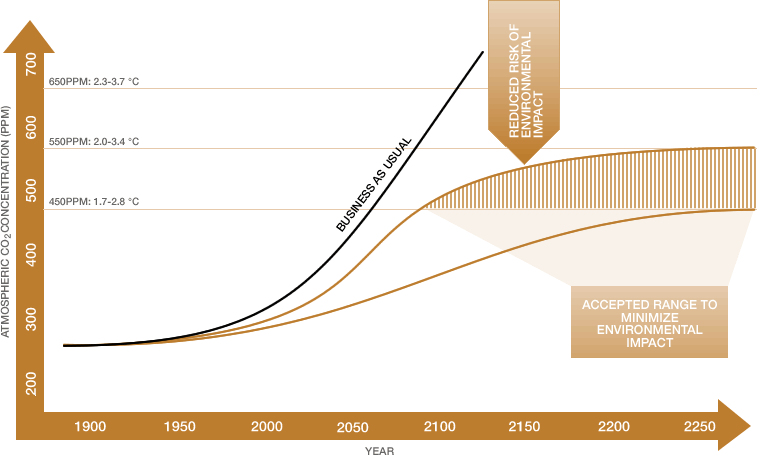Blueprint for Sustainability: An Overview
-
Material Issues
- Materiality Analysis
- Climate Change
- Mobility
- Human Rights
- Vehicle Safety
- Sustaining Ford
- Perspectives on Sustainability
To respond to the risks and opportunities posed by the climate change issue, our long-term strategy is to contribute to climate stabilization by:
- Continuously reducing the greenhouse gas emissions and energy usage of our operations
- Developing the flexibility and capability to market more lower-GHG-emission products, in line with evolving market conditions
- Working with industry partners, energy companies, consumer groups and policy makers to establish an effective and predictable market, policy and technological framework for reducing road-transport GHG emissions
We have set a goal to reduce the emissions of our U.S. and EU new vehicle CO2 emissions by 30 percent by the year 2020, compared to a 2006 model year baseline. Our blueprint for sustainability, unveiled in last year's Sustainability Report, spells out our product strategy to meet this goal. The blueprint builds on a series of commitments the Company has made, or participated in, to reduce the greenhouse gas emissions from our products and operations.
The blueprint's product strategy – called the Sustainable Technologies and Alternative Fuels Plan – details the near-, mid- and long-term steps we are taking – many of which are already underway – to develop and deploy vehicle and fuel technologies to implement the blueprint. The blueprint is supported by our sustainable mobility governance, which establishes structures and accountability for implementing the strategy.
To develop the blueprint, we analyzed the reduction in global GHG emissions that will be required to achieve the goal of climate stabilization. The analysis showed that very large reductions in emissions will be required to achieve the carbon-dioxide concentration accepted to minimize environmental impacts. (See Stabilizing Atmospheric CO2 Levels.) Next, we analyzed the current and projected contribution of light-duty cars and trucks to global GHG emissions (currently about 20 percent of CO2 emissions in the U.S. and about 11 percent globally) and the reduction needed to contribute to stabilization.
We used these assumptions in a model that considers both vehicle technology and fuel options. The purpose of the model was to determine the best combination of options that will yield the required emissions reductions at the most affordable cost. We then developed scenarios to assess how the vehicle and energy sectors can work together, each developing its own optimal but coordinated strategies on fuels and vehicle technologies. The output of this model and analysis is the Sustainable Technologies and Alternative Fuels Plan.
Our product strategy is complemented by actions to reduce energy use and GHG emissions in our operations. From 2000 to 2008, we improved the energy efficiency of our North American facilities by 35 percent and reduced global CO2 emissions by 45 percent overall and 24 percent per vehicle. The U.S. Environmental Protection Agency has recognized our energy conservation efforts four years in a row (a first for an automaker), most recently with the 2008 Energy Star Sustained Excellence Award. Please see Operational Energy Use and Greenhouse Gas Emissions for a detailed account of our progress in cutting energy use and improving the energy efficiency of our operations.

Our blueprint was developed to deliver the emissions reductions required for climate stabilization at the most affordable cost.
Related Links
- In This Report:
- External Web Sites:
Stabilizing Atmospheric CO2 Levels
